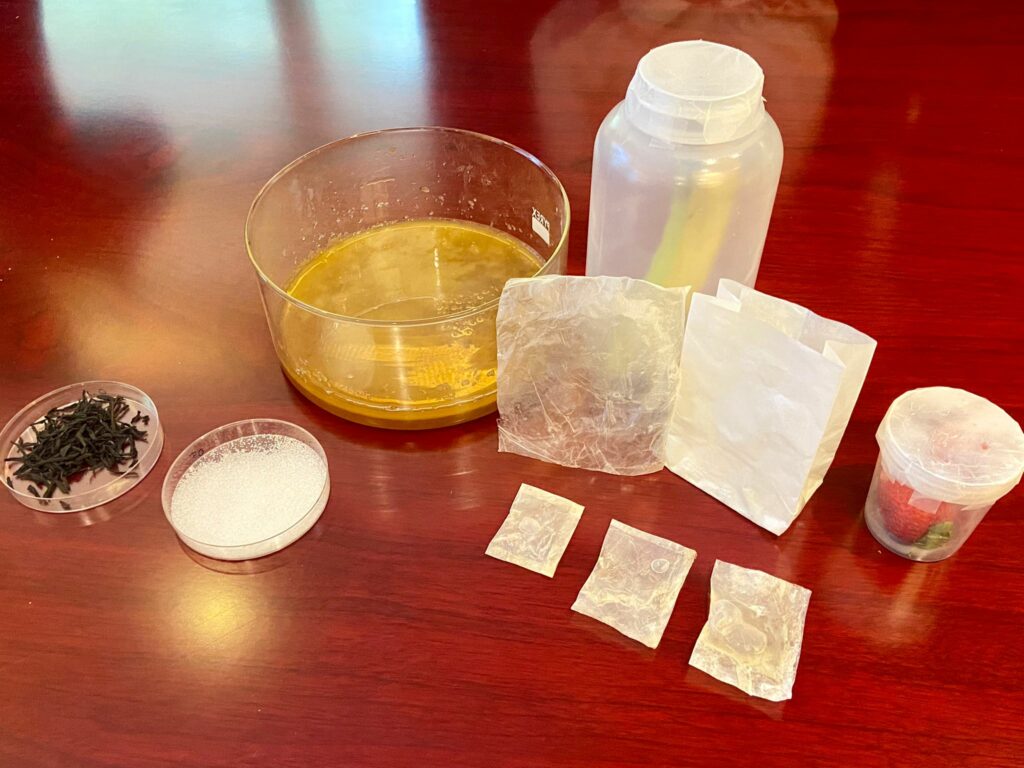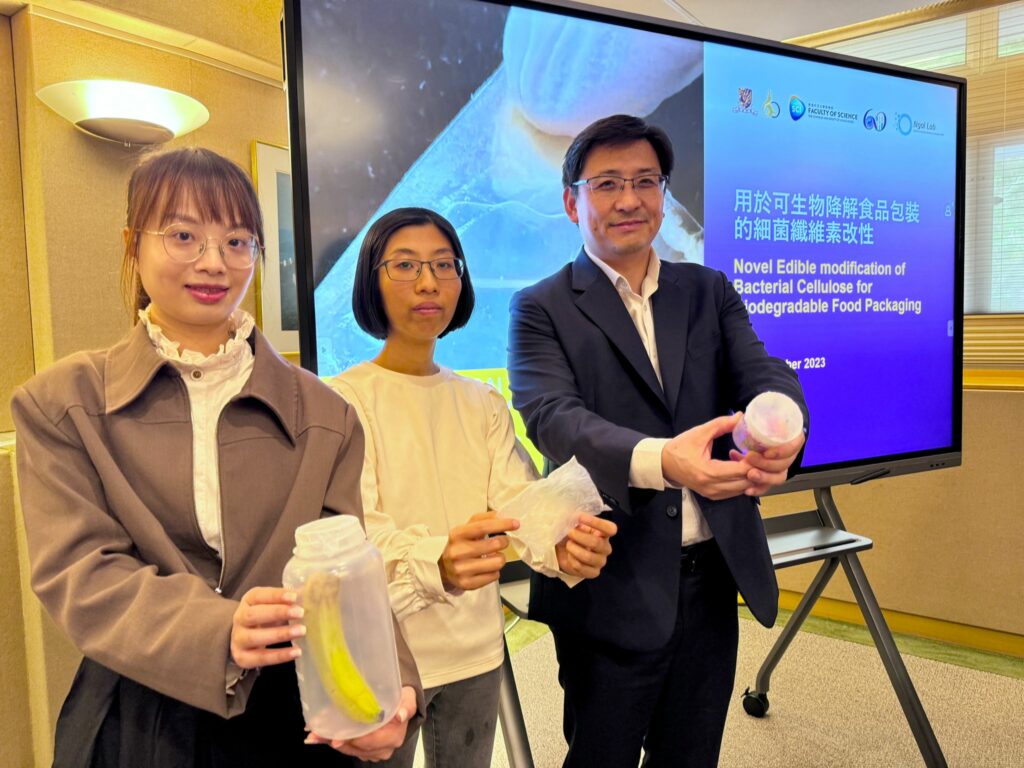Kombucha, a fermented tea drink known for its addictive, tangy flavour and its purported health benefits, has seen a rapid rise in popularity around the globe over recent years. But, you might be surprised to learn, kombucha isn’t just a delicious food and beverage product itself; it could also provide an innovative solution to food and beverage packaging.
This is thanks to the work of a team from the Department of Chemistry at The Chinese University of Hong Kong (CUHK), who have used the drink to create a new form of bacterial cellulose that has exciting potential applications as a biodegradable packaging material. The material is made using the symbiosis of Komagataeibacter xylinus bacteria and yeast, also known as the kombucha starter culture, which is modified to form biofilms.
The result is a much-needed alternative to plastic packaging. Plastic has the advantages of being cheap, lightweight and durable — but those advantages have become a problem, fuelling its runaway popularity as a packaging material. Plastic takes centuries to decompose, meaning the material is clogging landfills, choking ocean life and even alarming studies showing microplastics finding their way inside human bodies.
It has traditionally been incredibly hard to find alternative packaging materials. Candidates have faced drawbacks to commercialisation including limited availability of the resources needed to make them; high costs arising from investment in production development and low yields; shortcomings in strength, barrier properties and flexibility; and relative ineffectiveness when it comes to preserving the shelf life of packaged products. And even biodegradable materials can present their own challenges when it comes to breaking them down: the common biodegradable plastic polylactic acid (PLA), for example, which is made from corn starch, can only be decomposed at a specific temperature.
The new material, by contrast, exhibits the same stretching qualities as plastic, while biodegrading naturally with three to five months, and being entirely safe for human use; in fact, as you might expect from a material derived from kombucha, you could even eat it if you wanted (it’s probably not very tasty, though). It’s also stable, flexible, transparent, forms a sturdy barrier and is able to retain a steady temperature.
“We decided to look into bacterial cellulose (BC) as a possible biodegradable packaging material because it offers several advantages over traditional materials like paper and cellulose derived from plants like wood and cotton,” says Ngai To, Assistant Dean (Research) from the Faculty of Science and Professor in the Department of Chemistry, who led the team. “They have long cultivation periods and provide less strength compared to plastic. BC is known for its superior mechanical strength, short fermentation time, high purity and excellent barrier properties, making it a promising potential alternative.”

There are several reasons why they specifically chose to use kombucha, he adds. “Firstly, kombucha offers the advantage of adjustable chemical properties, allowing for customisation to suit specific packaging needs. Additionally, kombucha has a high yield of BC, making it a viable and sustainable source for production. The fermentation medium for kombucha production is readily available. Unlike other cellulose-producing bacteria, production of kombucha doesn’t require highly purified chemicals. Last but not least, the climate in Hong Kong and elsewhere in south China is well-suited for the fermentation process of kombucha.”
As a result, manufacturing is fairly straightforward: ferment kombucha, yielding cellulose as a by-product, then harvest the gel-like cellulose layer once it becomes thick enough, then coat it to make it transparent.
The Organisation for Economic Co-operation and Development (OECD) reports that global plastic waste production more than doubled between 2000 and 2019, reaching a staggering 353 million tonnes a year. The organisation notes that nearly two-thirds of this plastic waste originates from plastics with lifespans of less than five years, with packaging accounting for 40% of the total. This increase in plastic waste is at least partly attributable to the growing popularity of online shopping and takeaway services. To address this issue, various regions and countries, including European Union member states, Canada and New Zealand, have implemented measures to tackle the problem of plastic waste. Growing regulation means that the efforts of the research team have garnered significant attention, especially in the food packaging industry. In Hong Kong, for instance, the 2024 ban on disposable plastic tableware has had companies scrabbling to find alternatives.
“We have been approached by several food service industry companies, who are looking for sustainably sourced materials for packaging, such as trays, plates and cutlery,” says Professor Ngai. “We will soon collaborate with a food packaging company that specialises in producing sandwich boxes with transparent windows.”

Some barriers to commercialisation of the material remain, however. “One of the challenges is the higher cost of BC compared to traditional plastic bags,” he says. “To address this, efforts are being made to scale up production by employing specific cultivation equipment. By optimising the production process and finding ways to save costs on growth sources, such as purchasing sugar and black tea from source regions such as Yunnan, China, and using automated incubators, the production and labour costs can be reduced.”
And this could just be the start. At the same time as trying to commercalise the kombucha-based material, the team is also looking into other new films and coatings with potential applications in industries including cosmetics, ink and food. Additionally, BC films possess a remarkably smooth and uniform surface, the team envisions that it will offer a promising alternative to mushroom-derived leather products, which is another commonly used bio-based synthetic leather. Hopefully, one day in the not too distant future, we’ll be able to wave all that plastic goodbye.










